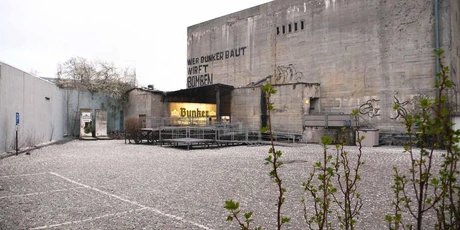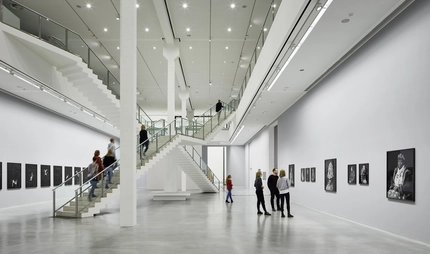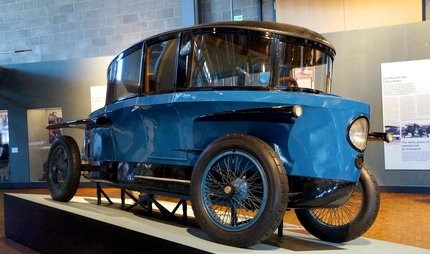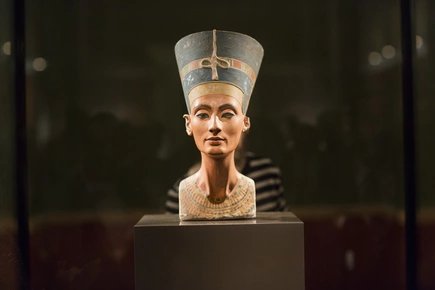
Berlin Story Bunker
History through multimedia
Discover the history of Germany on a chronological journey through the city's history in an unusual museum located in a bunker close to Anhalter station.
The Berlin Story Bunker is housed in the former air raid shelter at Anhalter Bahnhof. Spread over 6,500 square metres and three floors, you can experience an impressive overall experience of German history here. The high-rise bunker is a massive concrete building from the Second World War. Over time, the slogan "Whoever builds the bunker, drops the bombs" was painted on the walls as graffiti, a slogan that has become a trademark of the museum.
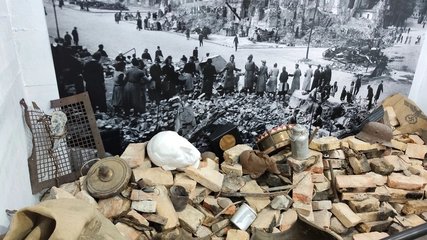
In the past, it was connected to the Anhalter Bahnhof by underground corridors. It served as an air raid shelter for far too many rail travellers during the war - today it is an authentic place of learning and remembrance that conveys history in two permanent exhibitions and a special exhibition:
- Hitler - How could it happen?
- Germany 1945 to today
- Memes: A special exhibition
Hitler - How could it happen?
How could it happen that so many people voted for Hitler? How did he become a Nazi? How did he come to power? How did anti-Semitism lead to concentration camps and the Holocaust? Why did generals and soldiers go along with him to the end? The suicide of the dictator Hitler effectively ended the bloodiest war in history. The exhibition "Hitler - How could it happen" takes you through 38 themed areas. On over 3,000 square metres and three floors, you can see a full-size replica of Hitler's bunker room as well as a model of the Führerbunker, photos, documents and films.
The exhibition begins with the construction of the bunker itself and sheds light on the causes, rise and effects of the Nazi regime. You will learn how Hitler came to power, how anti-Semitism spread and led to the Holocaust. Original documents, eyewitness accounts, photos and films illustrate the extent of the crimes. The replica of the Führerbunker and the 1:25 scale model of the complex are also central elements.
A highlight is the research station Hitler - The Itinerary. It provides an insight into Hitler's whereabouts and travel movements throughout his entire life. This unique collection is based on decades of research by historian Harald Sandner.
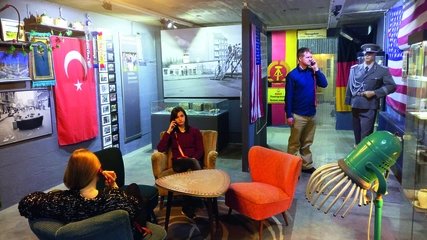
Germany 1945 to today
How did the ruins of Germany become a modern democracy? This exhibition begins with the end of the war in 1945 and takes you chronologically through the economic miracle of the 1950s, the protest movements of 1968, the fall of the Berlin Wall to current topics such as the coronavirus pandemic and the war against Ukraine.
Impressive installations - including an authentically recreated student dormitory from the 1970s and original parachutes from the Candy Bomber of the Berlin Airlift - bring this station to life. The social upheavals, new social movements and the "We can do it" of a multicultural society also find their place here.
Special exhibition: Memes - the new propaganda tool
Memes influence the way we form our opinions. This compact, critical exhibition shows how digital images, texts and videos have developed into new forms of propaganda. Propaganda used to be state-directed - today it is viral. This show takes a historical look at the political impact of images and their digital transformation.
More history
In the BlackBox at Checkpoint Charlie, 16 media stations tell you about the Cold War. There is also a small cinema and original objects from the time. A few metres further on, the Mauermuseum shows you escape cars, mini submarines and hot air balloons. At Checkpoint Charlie you will also find the large panorama The Wall by Yadegar Asisi: a huge circular image of the division of Germany during the 1980s. If you are interested in physics and science, the German Museum of Technology is the right place for you. Right from the outside you can see the Douglas C-47B Skytrain sultana bomber on the roof. For art lovers, the Berlinische Galerie with art from 1870 onwards is well worth a visit.
Your visit to the Berlin Story Museum

Take the S-Bahn S1, S2 or S25 to Anhalter Bahnhof. From here, it's just a three-minute walk to the Berlin Story Bunker. The Mendelssohn-Bartholdy-Park underground station (U2) is also just a few hundred metres from the exhibition. You will receive an audio guide at the entrance along with your ticket. It is best to plan around three hours for your visit. With the Berlin WelcomeCard you get a discount. Last admission is at 5.30 pm.
Information for school classes
The price is reduced if you visit the Berlin Story Museum with a registered group of 15 or more people. School classes can walk through the museum independently with the audio guide. There is also a quiz. Special information for teachers can be found on the Berlin Story Museum website.
Opening hours
| Monday | |
|---|---|
| Tuesday | |
| Wednesday | |
| Thursday | |
| Friday | |
| Saturday | |
| Sunday |
